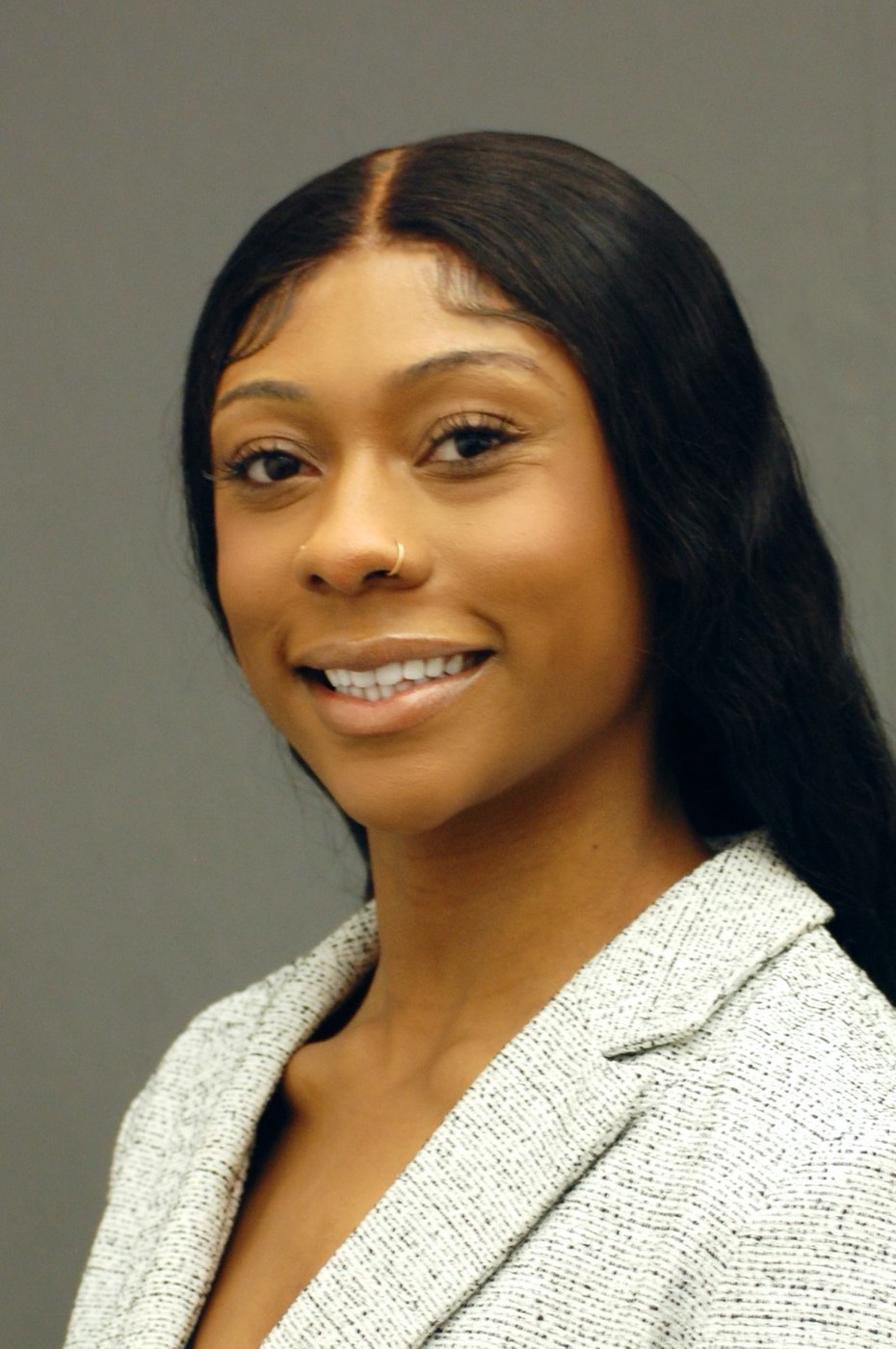Posted: April 5, 2023
Jada Spady an Agricultural Sciences Major was nominated for the 2023 "Celebrating Women in Toxicology Award" at the SOT 62nd Annual Meeting and Tox Expo in Nasville, Tennessee which was held March 19–23, 2023. Jada is a part of a large special interest group of women in the Toxicology field, and was nominated for her research experience and work at Johnson & Johnson as a Consumer Toxicology Co-op.

Jada Spady
Written by Jada Spady:
I came into undergrad at The Pennsylvania State University as a toxicology & pharmacology major,
ready to find out what it takes to call myself a scientist and how I can make an impact in my field as
an African American woman. As I approach graduation and became a leader in the scientific
community, I can say I answered these questions for myself. Immediately into my first semester, I
started work as a laboratory technician for a common use lab on campus. Alongside my PI, we were
able to manage five laboratories, supervising and training any faculty and scholars worldwide hoping
to use our unique instruments for their own research. Along the way I gained knowledge on
designing standard operating procedures, calibrating each machine, weighing sample standards,
maintaining chemical inventory/disposal and understanding how to present myself around a lab.
During the time of the COVID-19 pandemic, I began working at CVS as a pharmacy technician. As
an essential worker during peak time of the pandemic, my job became crucial. Working in a team for
filling, packaging, and calculating hundreds of prescriptions one-by-one daily, while the pharmacist was
at the forefront of vaccinating a long line of patients was intimidating. Yet, had the biggest reward. I
was able to gain a greater knowledge of what types of medicine is already out there and add to a
more active side of getting medicine to a consumer.
Remotely, I started research at school through the Dr. Steven Schiff lab, focused on predicting
effective control strategies for epidemics. Specifically, our team assessed the prevalence of herpes
virus, congenital Cytomegalovirus (cCMV), in infants in third world countries. My role was to
synthesize cCMV data endpoints of over 400+ scientific journal articles to emphasize the
significance of the virus globally. This contribution led to a published meta-analysis where I was
authored on the JAMA Network Journal.
Participating in the summer 2021 cohort of the University of Minnesota’s, Life Sciences Summer
Undergraduate Research Program is where my direct interest in the field lay. The Dr. Marco
Pravetoni lab focused on the development of vaccines and monoclonal antibodies (mAb) to help
combat opioid use disorders. With fentanyl leading the cause of synthetic opioid fatalities, the goal
was to use these large monoclonal antibodies to sequester the drug in the serum with high selectivity,
reducing its distribution to the brain, and thus diminishing its rewarding effect and opioid-induced
respiratory depression. From here, I was able to design my own poster presentation based on the
efficacy of the lab’s anti-fentanyl monoclonal antibodies in mice and rats over 10 weeks. Researching
for the university is where I first heard of the annual Society of Toxicology Conference.
Consequently, I submitted my abstract and was fully funded to present my poster at the 2022
conference in San Diego, California that year as an advocate for Penn State.
Recently, my major contributions have been finishing up a 6-month Consumer Toxicology co-op at
Johnson & Johnson. I worked closely with the preclinical safety tox team for over-the-counter and
skin care products. My job consisted of updating ingredient profiles, based on research studies
showing adverse effects, carcinogenicity values, toxicity, irritation data, etc. This work is important
for any toxicologist looking to add a new chemical to a product. My final project was to start the
pilot to Project CRISP. The goal of Project Resource Consumer Ingredient Surveillance Program,
was to approach safety surveillance in real time and keep up with what consumers are saying about
the ingredients of our products. The team and I were looking to develop a platform that presents
callouts from other forms of media (i.e. www, blogs, reddit, instagram). After contacting external
and internal partners, watching demos, and collaborating with other departments, the imprint I left
was having this pilot study approved for $11,000, by the Senior Vice President of Global Medical &
Clinical Sciences of R&D at Johnson & Johnson.
Lastly, I wanted to take advantage of becoming a leader in the pharma industry. I was appointed as
the Vice President of the Johnson & Johnson Intern/Co-op Association in Skillman, NJ. As a leader
on the executive board, I hosted weekly meetings pushing each chair to organize two events per
month for all interns. Some events included a resume workshop, trivia nights, a soup kitchen service
event, and several tours of other sites around the tristate area. I took the initiative of announcing my
own virtual event, “JNJ n’ Beyond”. Around thirty people came, and the objective was to host a
professional development event and dream big about what is next after graduation. I started the event
off with an open discussion. Then, I brought in two speakers who talked about how leveling upwards
in our careers isn’t always a straight road and different options in continuing your education.
Encouraging us all to look into pursuing higher education. As for myself, I will be completing a
summer internship with Genentech through their clinical pharmacology department, determining
therapeutic drug doses for cancer clinical trials in San Francisco, California. Then, I will be applying
to PhD programs and fellowships this upcoming fall for my next pursuit of a Doctor of Philosophy in
Pharmaceutical Sciences

